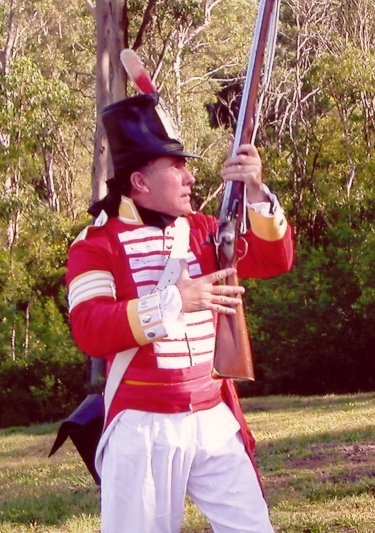Bushrangers hid in caves in the Northern Rocks
|
||||||||||
The rocky and rugged area just to the north of Parramatta in the 1800s was a haven for bushrangers. It was known then as the ‘Northern Rocks’ although we now refer to it as North Rocks.
 |
On Saturday afternoon, 19 June 1830, Dr William Jamieson Sherwin, first Australian born medical practitioner, was returning to Parramatta from a house call on Windsor Road. Near the bridge crossing Darling Mills stream, at the junction of Windsor and North Rocks Roads, two men emerged from the bushes, took hold of the doctor’s horse’s reins and led him off into the thick bush.
“We want money, doctor, we are starving,” they demanded. The doctor explained that he had just come from a visit to a patient who had not been able to pay him and consequently he did not have any money to give to them. The bushrangers did not believe the story and searched him. They found a gold watch and a case of surgical knives. The bushrangers thought they could sell the watch for at least two pounds (£2). Dr Sherwin pleaded with the men saying “Its value to me for family reasons is beyond the power of money to cover.”
“Play fair with us and we’ll tell you what we’ll do,” the bushrangers replied. “You ride to the pub and get the money we say it’s worth and we’ll meet you here again when you coo-ee, and in return for the money we will hand over the watch to you.”
The doctor agreed and rode into Parramatta where he was only able to borrow 30/- (£1.10.0). Although worried that he had not secured the total money demanded, Dr Sherwin rode back to the appointed area and called out to the men. They emerged from the bushes and returned the treasured watch despite the shortfall in cash. Dr Sherwin rode straight back to Parramatta and reported the incident to Chief Constable John Thorn.
Three days later whilst patrolling Windsor Road, Thorn was attacked by two men firing muskets. Thorn returned fire and shot one man dead, later identified as John Macnamara, a convict from County Cork, Ireland, transported to Australia on the ship Isabella in 1823. As a reward for stopping the bushranger, Thorn received a grant of one square mile, 640 acres [259 hectares] in the current suburbs of Pennant Hills and Thornleigh. The suburb of Thornleigh is named after him.
In 1830, two pounds (£2) of money would buy one milking cow, 20 dozen oranges, 53 loaves of bread, 11 pounds of butter, 4 blankets or 34 pounds of bacon.
Trevor Patrick is a local historian of the north-west of Sydney, Australia. His latest book, In Search of the Pennant Hills, recounts some of these stories (and others) in more detail.